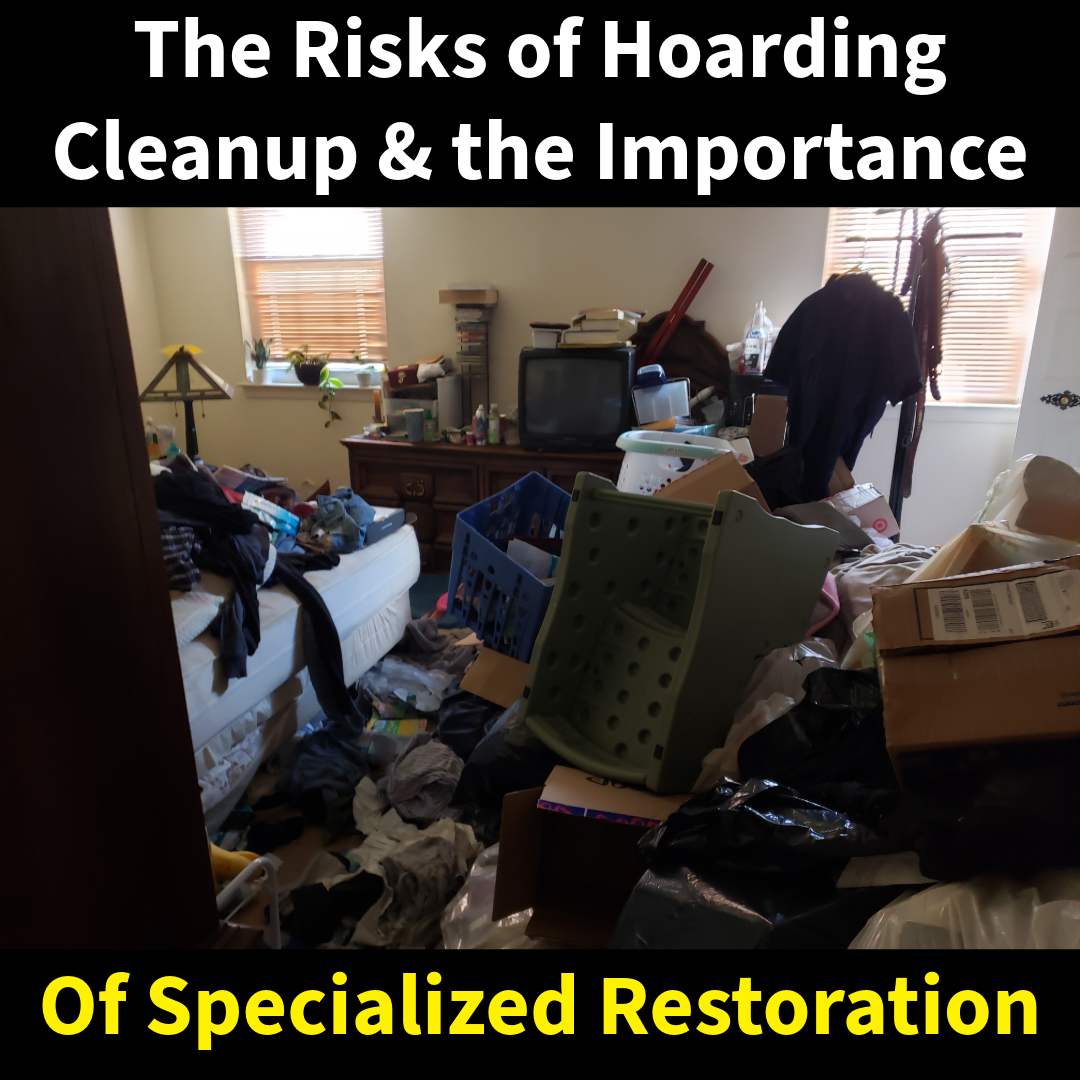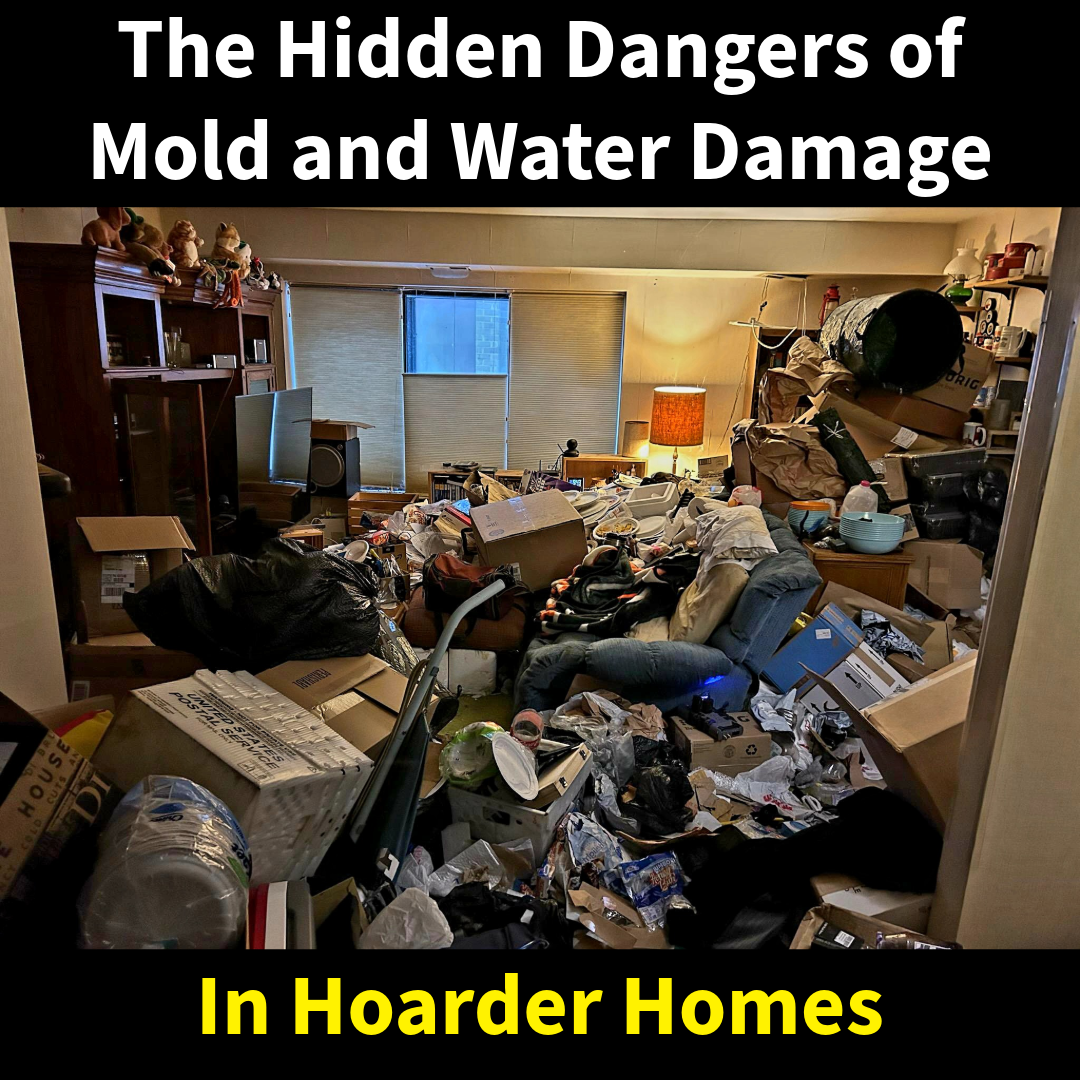Hoarding is more than just an accumulation of items; it’s a complex issue that can significantly impact an individual’s safety and health. While hoarding cleanup may seem straightforward, it involves much more than just removing excess clutter. It’s essential to understand the inherent risks and why specialized restoration services are crucial for addressing these challenges effectively and sensitively.
The Risks Associated with Hoarding Situations
Health Hazards: Hoarded environments often suffer from neglected maintenance, leading to severe issues like mold growth. This mold thrives in damp, unventilated areas and can pose serious health risks to residents. Additionally, hoarded items can hide leaks or other water damage, worsening the mold problem undetected. Biohazards such as rotting food, human waste, and animal feces are also common in severe hoarding situations, presenting significant health risks.
Pest Infestations: The clutter and filth in hoarding scenarios provide perfect breeding grounds for pests, including rodents, cockroaches, and fleas. These pests not only contribute to the spread of disease but can also exacerbate the difficulty of cleaning and sanitizing the home.
Structural Dangers: Excessive clutter can lead to structural damage as the weight of accumulated items puts stress on the building’s framework. This can lead to sagging floors, compromised walls, and in extreme cases, collapse, posing severe risks to occupants and neighbors.
The Limitations of Junk Removal Services
Junk removal services can clear out large volumes of clutter, but they lack the capabilities necessary for a thorough and safe hoarding cleanup. These services typically do not have the expertise to identify underlying issues like moisture problems and mold infestations. Furthermore, the high turnover rates within these companies can lead to inconsistent quality of service.
Most critically, junk removal services are not equipped to handle the sensitive nature of hoarding cleanups. They often do not provide the necessary compassion and understanding required to support hoarders through the emotionally difficult process of parting with their possessions.
Why Specialized Restoration Services are Essential
Expertise in Identifying Hidden Problems: Restoration companies like MSI are trained to recognize and address hidden problems. During hoarding cleanups, MSI professionals look for signs of water damage and mold, ensuring these issues are remediated along with the cleanup.
Comprehensive Cleanup Approach: MSI offers a comprehensive approach to hoarding cleanup, which includes not just removing items but also sanitizing the area, conducting mold remediation, and addressing any pest infestations. This holistic approach ensures that the space is safe, clean, and habitable post-cleanup.
Sensitivity and Understanding: MSI’s professionals are specifically trained to handle hoarding situations with the sensitivity and respect they require. We understand the psychological impact of hoarding and work closely with hoarders and their families to make the cleanup process as manageable and stress-free as possible.
Conclusion
Choosing the right professional for a hoarding cleanup is crucial. It’s not only about clearing out clutter but ensuring the cleanup is thorough, respects the emotional conditions of the client, and addresses all health and safety hazards. Contact MSI today for a compassionate, comprehensive, and expert approach to hoarding cleanup.

